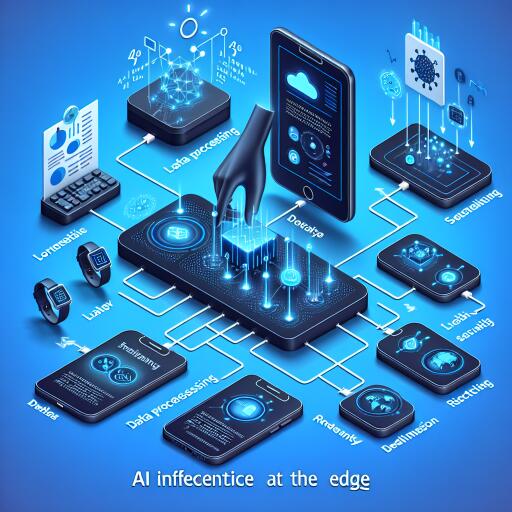Unpacking AI Inference at the Edge: A Game Changer for Businesses
In the rapidly evolving digital landscape, businesses across various sectors are increasingly turning towards Artificial Intelligence (AI) and Machine Learning (ML) to power their operations and deliver enhanced customer experiences. One breakthrough technology steering this transformation is AI inference at the edge, a solution that places the power of AI closer to where data is generated and consumed. This cutting-edge technology is making strides in industries like gaming, healthcare, retail, and beyond, but what exactly is it, and why is it becoming indispensable for businesses?
Understanding AI Inference
AI inference involves the phase where a trained ML model is applied to new data to make predictions, generate content, or perform other tasks. This occurs in real-time, directly impacting the user’s experience with an application. For instance, when a user interacts with a virtual assistant like ChatGPT, the assistant’s response generation is an example of AI inference in action.
Why AI Inference at the Edge?
Traditionally, AI inference has been cloud-based, relying on data centers located far from the end-user. However, this setup can introduce delays. AI inference at the edge moves the process closer to the data source or the user, drastically reducing latency and enabling real-time responses critical for applications like instant fraud detection, live gaming interactions, and immediate image recognition.
The Mechanics of Edge AI
Edge AI is all about executing AI processes nearer to the data origin. It encompasses a broad spectrum of technologies, including edge servers and IoT devices. While AI training – the process of teaching an AI model – can also occur at the edge, our focus here is on inference, which benefits significantly from reduced distance to the end-user.
Key Components and Benefits
To achieve efficient AI inference at the edge, businesses must leverage a mix of low-latency networks, servers equipped with AI accelerators (like NVIDIA GPUs designed for speedy inference), and advanced container orchestration technologies for scalable AI deployments. These technological foundations ensure that businesses can offer real-time AI applications without compromising on performance or scalability.
The Three Pillars of AI Inference at the Edge
- Low Latency: Edge computing minimizes the physical distance that data travels, thereby significantly reducing response times and enhancing the user experience with nearly instant AI interactions.
- Security and Data Sovereignty: By processing data locally, edge AI helps businesses comply with regional data protection regulations easier and reduces the risk of data breaches during transmission.
- Cost Efficiency: Implementing edge AI can lead to savings on cloud computing costs and data transmission, with businesses paying only for the resources utilized by their AI models.
Who Stands to Benefit?
AI inference at the edge is not industry-specific; it offers a myriad of advantages to any sector relying on AI/ML for real-time applications. From technology firms creating next-gen AI tools to retail brands offering virtual try-ons, any business aiming to provide seamless, interactive experiences can gain from deploying edge AI solutions. In manufacturing, for instance, real-time defect detection can significantly enhance quality control, while in gaming, developers can offer immersive, responsive environments tailored to each player’s actions in real time.
Conclusion
As businesses push for more personalized, responsive, and secure digital experiences, AI inference at the edge stands out as a critical technological pillar. Offering lower latency, enhanced data protection, and cost savings, it enables companies to deploy real-time AI applications efficiently and effectively. In an age where instant digital experiences are not just preferred but expected, integrating edge AI into business infraferences proves not only innovative but essential for future success across a wide array of industries.










